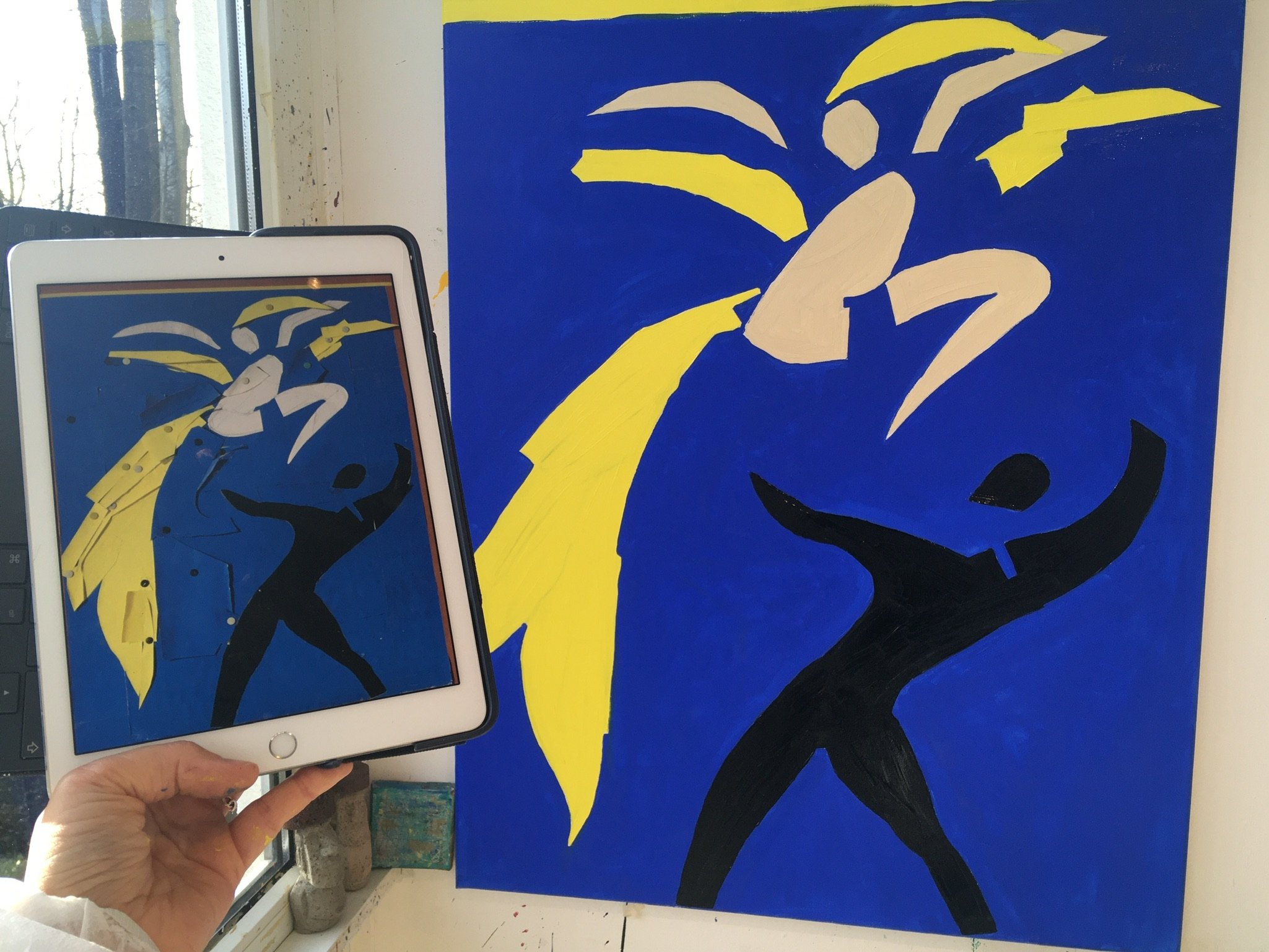The Hamburg Players count themselves lucky to have amongst their midst many talented people – some with amazing singing voices, others who are able to write music on the spot, and some who, brush and palette in hand, paint pictures. Like Mathilde Berry, who plays Helen Carver in our production of Design for Living, who is also a prolific visual artist. In addition to envisioning the set design, she contributed various art pieces for the stage – amongst them a recreation of a Matisse painting which plays a role in the beginning and the end of the play. Roping in Jessica Albiston and Lexi von Hoffmann, these three crafted various paintings, sketches and sculptures which can be seen on stage.
The “Mathilsse”
First, there’s Two Dancers by Henri Matisse as recreated by Mathilde, hence we like to refer to it as our “Mathilsse”. Interestingly, the French artist made this - one of his earliest experiments with cut paper - as a study for the curtain of a ballet.
Another example is a portrait of one the main characters, Gilda, inspired by Christian Schad’s Halbakt from 1929. After photographing actress Clara Kasten in a similar pose like the original painting, Mathilde then transformed the photo into a digital painting on her iPad. “I printed the outcome in various sizes of paper to decide on the final size of the canvas. With an acrylic medium and heavy body golden paint, I gave structure to the print on canvas, adding wavy brushstrokes to give a feeling of an original painting”, she describes. More pieces were made, not all of them necessarily in anyone’s studio but rather with the help of a printing service.
Characters coming to life
On the walls in the Paris set of Act I in Design for Living, you’ll find a lot of sketches – in the play they’re done by the artist Otto, one of the main characters - in real life, Jessica Albiston drew them.
"Anytime I start drawing portraits, especially if they're a product of my imagination, and not copied from a picture, I think about the story of the character. Who are they? What would their names be? What would they be thinking in that pose?” Jess explains. “I often start with a picture in mind of what I want the drawing to look like, but while drawing and seeing the characters come to life, their stories change. At the end, when I look at them or everytime I go back to look at them, I feel like they're their own characters, that they have their own stories and lives that go beyond my imagination, and I believe that's why every piece of creativity offers each individual the freedom of interpretation."
When things don’t go quite as planned
A backstage shot of three sculptures (originally planned to be on stage in Act III).
The process of making sculptures – some of them spraypainted findings from Oxfam, others made exclusively with modelling clay – took place in Lexi’s flat. “At some point, my dining table had turned into a little exhibition area,” she remembers.
However, things do not always go according to plan. Turns out that lavish evening gowns and little handcrafted statuettes aptly titled “Man with Spear” (as seen here, together with “Seagull” and “Silver Camel in the Desert”) do not really go together well when put in the same scene. Luckily, in the theatre we always have the dress rehearsal to find out and adapt.
Though, in this case, a decapitated sculpture and a torn costume didn’t really leave much choice…





